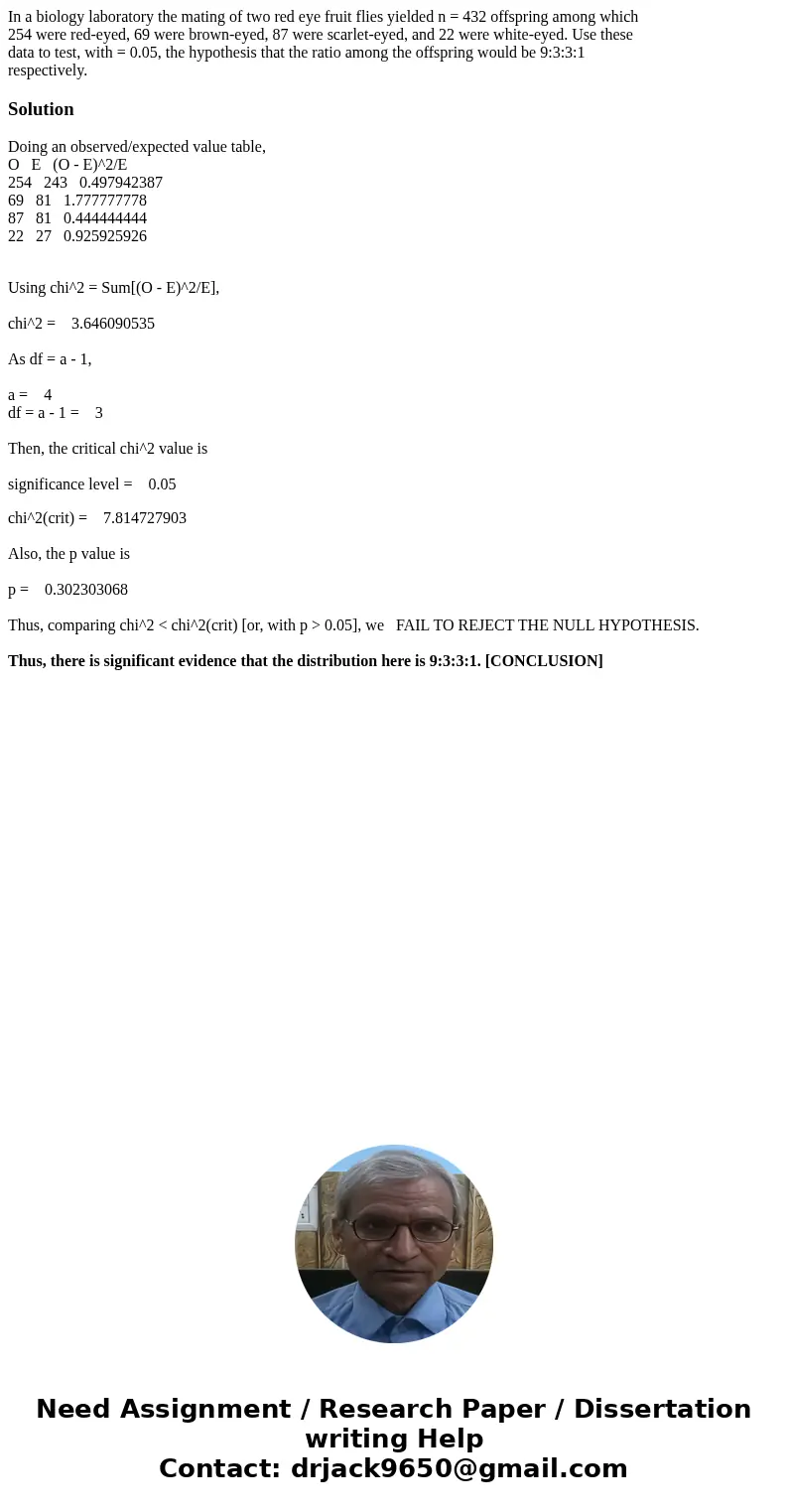In a biology laboratory the mating of two red eye fruit flie
In a biology laboratory the mating of two red eye fruit flies yielded n = 432 offspring among which
254 were red-eyed, 69 were brown-eyed, 87 were scarlet-eyed, and 22 were white-eyed. Use these
data to test, with = 0.05, the hypothesis that the ratio among the offspring would be 9:3:3:1
respectively.
Solution
Doing an observed/expected value table,
O E (O - E)^2/E
254 243 0.497942387
69 81 1.777777778
87 81 0.444444444
22 27 0.925925926
Using chi^2 = Sum[(O - E)^2/E],
chi^2 = 3.646090535
As df = a - 1,
a = 4
df = a - 1 = 3
Then, the critical chi^2 value is
significance level = 0.05
chi^2(crit) = 7.814727903
Also, the p value is
p = 0.302303068
Thus, comparing chi^2 < chi^2(crit) [or, with p > 0.05], we FAIL TO REJECT THE NULL HYPOTHESIS.
Thus, there is significant evidence that the distribution here is 9:3:3:1. [CONCLUSION]

 Homework Sourse
Homework Sourse